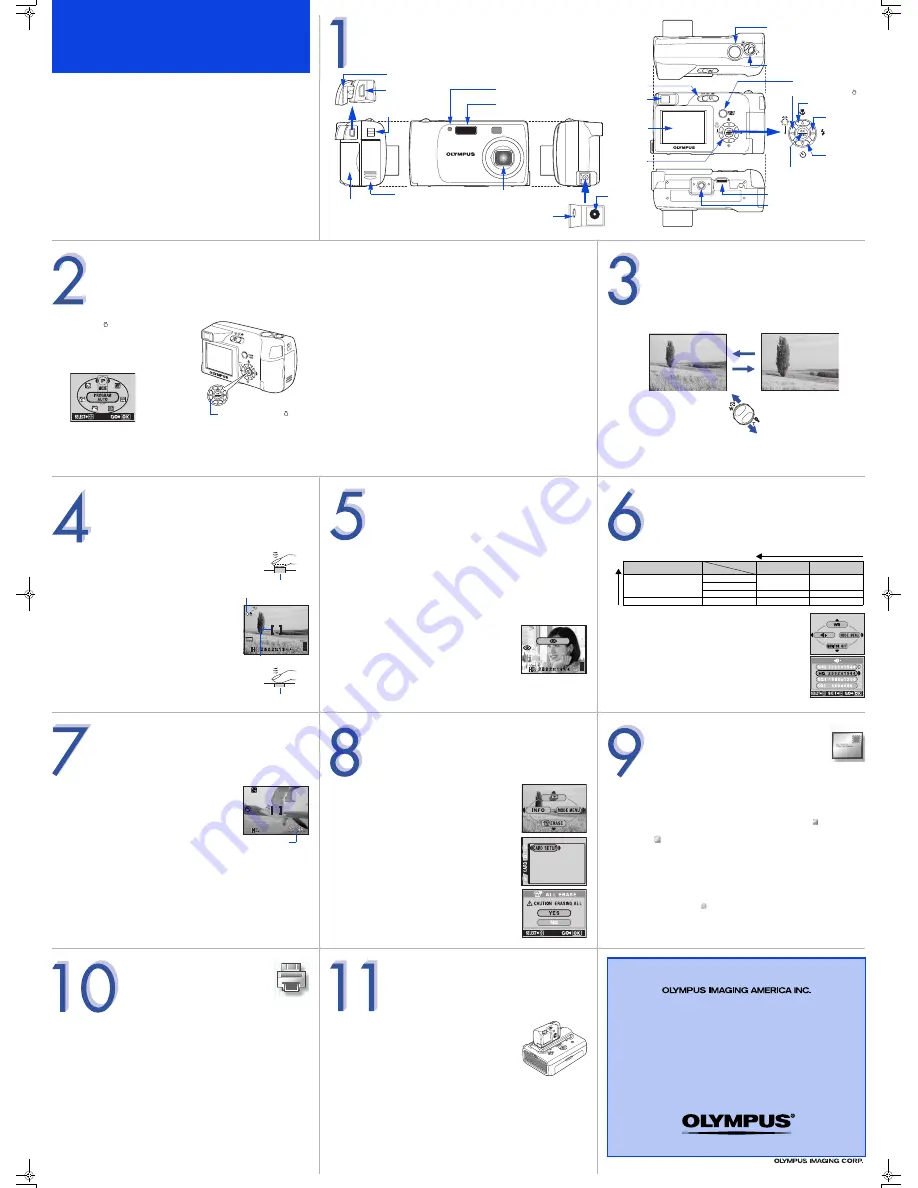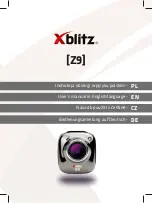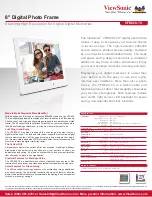
Quick Reference Guide
D-555 ZOOM
INDEX
1. Camera Diagram and Controls
2. Shooting Modes
3. Using the Zoom
4. How to Use the Autofocus
5. Flash Modes
6. Image Quality Modes
7. Recording a Movie
8. How to Erase All Pictures
9. E-mailing a Picture
10. Printing a Picture
11. ImageLink Printer
CAMERA DIAGRAM AND CONTROLS
Self-timer lamp
Lens
DC-IN jack
Viewfinder
Monitor
Shutter button
Zoom lever (W/T•
GU
)
Tripod socket
Macro button (
&
)
OK/MENU button (
Z
)
Flash mode
button (
#
)
QUICK VIEW
button
Arrow pad
(
acbd
)
POWER
switch
Flash
Card cover
Strap eyelet
Battery compartment cover
DC-IN jack cover
Self-timer
button (
Y
)
Shooting mode button ( )
Printer connector
USB
USB connector
USB connector cover
Note: You can change the mode dial when the camera is on or off.
SHOOTING MODES
a.
Press
b
( ).
b.
Press
b
or
d
to select a mode.
Shooting mode button ( )
Shooting Mode Descriptions
P
• The generic mode for taking pictures. You can also freely adjust functions
such as exposure, etc.
I
• Lets you take impressive portrait shots.
K
• Lets you take the subject in the foreground as well as the landscape in the
background clearly.
L
• Lets you capture the vivid blues and greens of all the landscape from nearby
to far off in the distance.
m
• Lets you capture those details that would otherwise be cloaked in darkness
when taking pictures at night.
o
• Lets you take a picture of yourself while holding the camera.
N
• Lets you record movies.
USING THE ZOOM
This camera features a zoom lens, letting you get closer to the action or
capture wide-angle shots.
• Push toward W to zoom out and get more into the picture.
• Pull toward T to zoom in and get closer to the action.
Zoom in
Zoom out
Zoom out:
Push the zoom lever toward W
Zoom in:
Pull the zoom lever toward T
HOW TO USE THE AUTOFOCUS
a.
While positioning the AF target over the subject, press
and hold the shutter button halfway.
b.
The green lamp, which indicates the focus and
exposure are locked, remains lit as long as the shutter
button is kept depressed halfway.
c.
Press the shutter button completely to take the
picture.
Shutter button
AF target mark
Green lamp
Shutter button
FLASH MODES
This camera features multiple flash modes. You can select the
appropriate flash mode to the suit the situation.
(None)
• AUTO-FLASH - The camera decides if the flash is needed.
!
• RED-EYE REDUCTION - Reduces the incidence of red-eye by
emitting pre-flashes to shrink pupil size before taking the picture.
#
• FILL-IN FLASH - The flash always fires. Suitable for shooting pictures
into strong light.
$
• FLASH OFF - The flash is turned off. Suitable for when flash
photography is not permitted.
• Press the
d
(
#
) button repeatedly to toggle through
the flash modes.
IMAGE QUALITY MODES
Your camera is equipped with multiple image quality modes, which
determine the quality and image size of the pictures you take. Below is
a general description of the commonly used modes. For a detailed
description of all quality modes, refer to the Advanced Manual
included on the CD-ROM.
a.
Press
Z
.
b.
Use the arrow pad to select [
K
] on the monitor.
c.
Select the record mode. Use the arrow pad and
Z
to
make further settings.
Image becomes clearer
Application
Compression
Image size
Low
compression
High
compression
Select according to print siz
2592 × 1944
SHQ
HQ
2592 × 1728
1600 × 1200
—
SQ1
For small-sized prints and websites
640 × 480
—
SQ2
Image s
ize
becomes
larg
er
RECORDING A MOVIE
a.
Set the shooting mode to
N
.
b.
Press the shutter button to start recording
(video).
c.
Press the shutter button again to stop.
Remaining recording time
HOW TO ERASE ALL PICTURES
WARNING - PERFORMING THESE STEPS WILL DELETE ALL
PICTURES!
a.
Slide the
POWER
switch to
q
, then press
Z
.
b.
Use the arrow pad to select [MODE MENU] on the
monitor.
c.
Select the [CARD] tab, and press
d
.
Select the [CARD SETUP], and press
d
.
Select [ALL ERASE], and press
Z
.
d.
Select [YES] and press
Z
.
E-MAILING A PICTURE
Using the OLYMPUS Master software (included), you can share your pictures with
others by using the built-in e-mail feature.
After installing OLYMPUS Master, open the program and click “ Browse
Images”. From the “Browse” window, select the picture(s) you want to send and
click the “ E-mail” tool button.
At this time, you can resize your pictures to make them more manageable for e-
mail. This helps you stay within the e-mail capacity limitations set by your or the
recipient's e-mail provider.
When finished, click the “ Launch Mailer” button at the bottom of the
window. Your default e-mail program will open, and the selected picture(s) will
automatically be attached to a new message.
Two Corporate Center Drive, PO Box 9058, Melville, NY 11747-9058
Technical Support (USA):
24/7 online automated help: http://olympusamerica.com/support
Phone customer support: 1-888-553-4448 (toll free)
Our phone customer support is available from 8am - 10pm, (Monday to
Friday) ET
E-mail: [email protected]
Olympus software updates can be obtained at: http://olympus.com/digital
© 2005
PRINTING A PICTURE
Using the OLYMPUS Master software (included), you can make prints of your
pictures using your own photo printer.
After installing OLYMPUS Master, open the program and click the “Print Images”
icon on the main menu. You can create many different types of prints such as an
index print, photos, albums, or calendars.
Simply select the image(s) and add them to one of the many layouts within
OLYMPUS Master.
For detailed instructions, please refer to the “Help” menu in the software.
You can also order prints online using the “Print Online” feature in OLYMPUS
Master.
Alternatively, you can print your pictures by connecting your PictBridge*-
compatible camera directly to a PictBridge*-compatible printer, such as the
Olympus P-10 Digital Photo Printer. This permits fast, easy printing without using
a computer.
* For detailed instructions on using PictBridge, please refer to your camera’s
Advanced Manual included in digital format on the CD-ROM.
INCLUDED PRINTER
By docking the camera with the included printer, you can
print pictures directly without having to use a personal
computer.
In addition, you can also print pictures by connecting the
printer to a PictBridge compatible camera or a personal
computer.
Direct Printing from Digital Camera
Connect the camera in the same pack directly to the printer and print pictures
from camera by instructed operation procedure.Cable connection is unnecessary.
Printing fron PictBridge-compatible digital camera
The common standard for the camera and the printer is supported by the
software “PictBridge”.The camera and the printer both compatible with
PictBridge are connected by USB cable to print pictures from camera.
Printing from PC
The printer and the PC are connected by USB cable to print pictures from PC.
CONTACT INFORMATION
d4255_qsg_e.fm Page 2 Saturday, June 4, 2005 2:17 PM




















